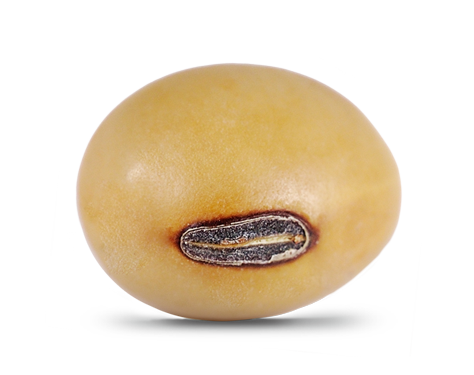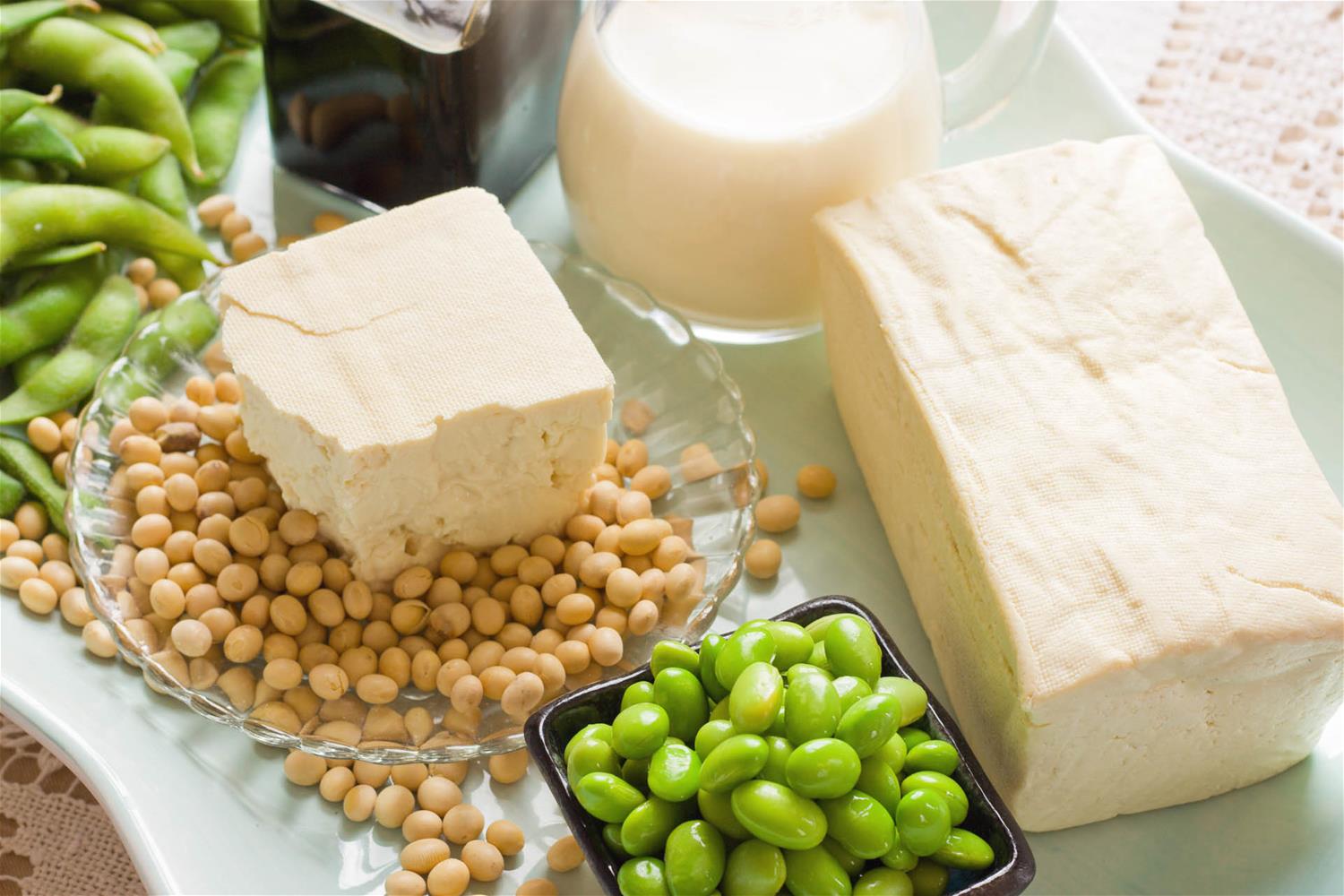Soy Protein Sources
and Soy Foods
Soy Protein Sources and Soy Foods
Soy protein—the protein that’s in or isolated from soybeans—is a power-packed ingredient found in many of your favorite foods. The soybean is classified as a legume and is sustainably grown by U.S. farmers. Learn more about soy protein, where to find it, and how to add it to your recipes.
Soy Protein Benefits
Soy is the only plant protein that carries an FDA authorized health claim, confirming it may be able to reduce the risk of coronary heart disease. It’s also a source of folate, potassium and fiber. Plus, the quality of soy protein is similar to animal protein and higher than the quality of nearly all other plant proteins. That’s because soy is a complete protein, which contains all nine essential amino acids our bodies need.

Soy protein is the only plant protein comparable in quality to animal protein.
Soy protein is the only plant protein comparable in quality to animal protein.
Foods That Are High in Soy Protein

Learn about the goodness of plant-based foods from registered dietitian nutritionist Mia Syn, MS
Soy Protein Foods at Your
Local Grocery Store
Soy Protein Foods at Your Local Grocery Store
Find these protein-packed soy foods in
nearly any grocery store:
Find these protein-packed soy foods in nearly any grocery store:
Whole Soybeans & Soy Nuts
Whole soybeans appear as raw, dry, roasted nuts and canned beans in grocery stores. Dried yellow soybeans are most commonly available, but all forms of roasted soy nuts are popular, including black soybeans. Just 1/3 cup (30g) of soy nuts contains 13 grams of high-quality protein.
Edamame
Edamame are soybeans harvested at a fresh green stage. They have a larger seed size and are more oval than yellow or black soybeans. U.S.-grown edamame is available in the pod or shelled in the frozen food and produce sections of grocery stores. In addition, 1/2 cup of cooked, shelled edamame contains 10 grams of soy protein.
Try making recipes featuring edamame:
Tofu
Tofu is a soft food similar to the texture of cheese that comes from the coagulated protein in soy milk. It’s highly versatile and has multiple uses in home cooking. Tofu comes baked, smoked, marinated, and crumbled. Protein amount can vary based on the variety (i.e., firm, extra firm, soft, etc). A 3 oz serving of firm tofu contains 9g of soy protein.
Try making recipes featuring tofu:
- Soy and Spinach Artichoke Dip
Tempeh
Tempeh is a protein-rich fermented soybean cake. Its texture is firm, tender, and chewy and it slices or cubes easily without crumbling. Tempeh cooks quickly and can be prepared in hundreds of ways with a variety of cooking methods. a 3oz serving of this soy food provides 17 grams of quality protein.
Try making our recipe featuring tempeh:
Soy Milk
Soy milk is free of lactose and milk protein, making it an alternative to dairy milk. It comes in many different flavors and can be combined with other ingredients to make a variety of beverages, from chai tea to smoothies. Fortified soy milk is the only plant milk dairy alternative approved by health professionals for children ages one to five. One eight-ounce glass of soy milk contains seven grams of protein, which is equivalent to the amount of protein in cow’s milk.
Try making recipes featuring soymilk:
- Chocolate Monkey Peanut Shake with Soy
Soy Nut Butter
Unlike peanut butter, soy nut butter is made from roasted whole soybeans rather than peanuts. Its taste and texture are reminiscent of peanut butter, but soy nut butter is a tree-nut-free alternative. Two tablespoons of soy nut butter contain around seven grams of protein.
Soy Protein for Cooking and Baking
Soy is a functional plant protein that translates well to various applications, including baking, grilling, microwaving, and pan frying. Soy ingredients can promote moisture and flavor retention, aid emulsification, and enhance the texture of many foods.
Types of Soy Protein Ingredients
Soy Flour
Soy flour, derived from ground soybeans, boosts protein, brings moisture to baked goods, is gluten-free, and provides the basis for some soy milks and textured vegetable protein. Soy flours are comprised of 50% protein, and work best in baked goods like cookies, muffins and quick breads. There are three types of soy flours: full-fat, which contains natural oils found in the soybean, low-fat, which contains about 1/3 of the amount of fat as full-fat, and defatted, which contains minimal fat.
Textured Soy Protein
Textured soy protein can be made from soy flour, soy concentrate, or soy protein isolate. Generally, textured soy protein concentrates are made from the soy flour derived from de-fatted soybean flakes. Many new soy foods entering the marketplace contain textured soy protein, which can be used alone or with meats to make a wide variety of products.
Soy Protein Isolate
Soy protein isolate is a dry powder that has been separated or isolated from the other components of the soybean. It supplies a high-quality protein that contains all the amino acids needed for growth. It is commonly used as an ingredient in a variety of packaged foods, including protein bars, breads and baked goods, soups, sauces, and more.
Soy Protein Concentrate
Soy protein concentrate is high in protein yet maintains soybeans’ natural dietary fiber. It can be used in a variety of foods, from baked goods to plant-based meat alternatives.

